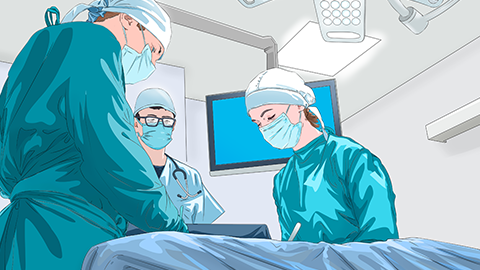How much does the surgery for removing underarm odor usually cost?
Generally, the reference price for bromhidrosis removal surgery ranges from 3,800 to 13,000 yuan per session. Noticeable improvement can usually be seen within 2-3 weeks after surgery, and full recovery typically requires 1-2 months. However, the exact cost is influenced by various factors such as surgical method, anesthesia type, preoperative examination items, postoperative care plans, and regional price differences. This procedure should be performed at a正规 hospital. Detailed analysis is as follows:
1. Surgical Method
Different surgical techniques vary in operational complexity and cost, thus affecting the reference price. Traditional excision of apocrine glands follows a standard procedure and does not require specialized precision equipment, with a reference price ranging from 3,800 to 7,500 yuan per session. In contrast, minimally invasive bromhidrosis removal requires specialized minimally invasive instruments and precise technical operations, increasing equipment and procedural costs. Its reference price may rise to between 7,500 and 13,000 yuan per session.
2. Anesthesia Type
The choice of anesthesia affects the price. Local anesthesia is simple to perform and involves minimal medication, resulting in lower costs, with a reference price between 3,800 and 6,500 yuan per session. If intravenous anesthesia is selected, a professional anesthesiology team is required for monitoring, and the medications used are more complex, offering higher safety and comfort. The reference price may increase to between 6,500 and 11,000 yuan per session.

3. Preoperative Examination Items
The number of preoperative examination items affects the overall cost. If only basic tests such as complete blood count, coagulation function, and infectious disease screening are performed, the reference price may range from 3,800 to 6,000 yuan per session. If the patient has underlying conditions such as hypertension or diabetes, additional tests including liver and kidney function assessments, electrocardiogram (ECG), and blood glucose monitoring may be required, increasing the examination costs. The reference price may then rise to between 6,000 and 10,000 yuan per session.
4. Postoperative Care Plan
Different postoperative care services result in price variations. Basic care, such as wound dressing changes and oral anti-inflammatory medications, has a reference price ranging from 3,800 to 7,000 yuan per session. If additional personalized services such as wound infrared therapy, analgesic medications, or scar repair treatments are provided, the care costs increase, and the reference price may rise to between 7,000 and 13,000 yuan per session.
5. Regional Price Differences
Regional economic levels influence surgical costs. In first-tier cities, high labor costs, venue rental fees, and consumable procurement prices typically result in higher reference prices, ranging from 7,000 to 13,000 yuan per session. In third- and fourth-tier cities and rural areas, where overall price levels are lower, the total cost decreases, and the reference price may range from 3,800 to 7,000 yuan per session.
In daily life, after surgery, it is important to keep the underarm area dry, avoid getting the wound wet, and minimize excessive arm lifting or strenuous physical activities to prevent wound dehiscence. Diet should be light, avoiding spicy and irritating foods and seafood such as chili peppers and crabs. Additionally, follow the physician's instructions for timely dressing changes and follow-up visits, monitor wound healing, and prevent infection.






